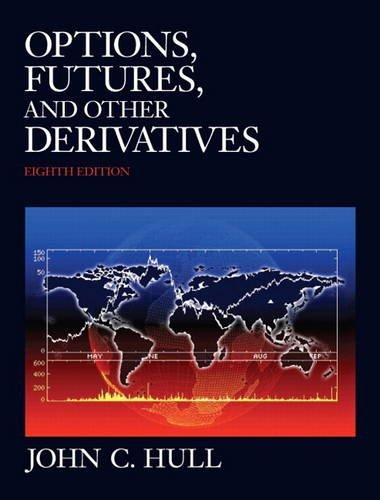Answered step by step
Verified Expert Solution
Question
1 Approved Answer
Interest rate swaps Phillip s Screwdriver Company has borrowed $ 2 0 million from a bank at a floating interest rate of 2 percentage points
Interest rate swaps Phillips Screwdriver Company has borrowed $ million from a bank at a floating interest rate of percentage points above threemonth Treasury bills, which now yield Assume that interest payments are made quarterly and that the entire principal of the loan is repaid after five years.
Phillips wants to convert the bank loan to fixedrate debt. It could have issued a fixedrate fiveyear note at a yield to maturity of Such a note would now trade at par. The fiveyear Treasury notes yield to maturity is
Is Phillips stupid to want longterm debt at an interest rate of It is borrowing from the bank at
Explain how the conversion could be carried out by an interest rate swap. What will be the initial terms of the swap? Ignore transaction costs and the swap dealers profit.
One year from now short and mediumterm Treasury yields decrease to so the term structure then is flat. The changes actually occur in month Phillips credit standing is unchanged; it can still borrow at percentage points over Treasury rates.
What net swap payment will Phillips make or receive?
Suppose that Phillips now wants to cancel the swap. How much would it need to pay the swap dealer? Or would the dealer pay Phillips Explain.
Currency hedging Alpha and Omega are US corporations. Alpha has a plant in Hamburg that imports components from the United States, assembles them, and then sells the finished product in Germany. Omega is at the opposite extreme. It also has a plant in Hamburg, but it buys its raw material in Germany and exports its output back to the United States. How is each firm likely to be affected by a fall in the value of the euro? How could each firm hedge itself against exchange risk?
Currency risk Suppose that in one and twoyear interest rates are in the United States and in Japan. The spot exchange rate is $ Suppose that one year later interest rates are in both countries, while the value of the yen has appreciated to $
Benjamin Pinkerton from New York invested in a US twoyear zerocoupon bond at the start of the period and sold it after one year. What was his return?
Madame Butterfly from Osaka bought some dollars. She also invested in the twoyear US zerocoupon bond and sold it after one year. What was her return in yen?
Suppose that Ms Butterfly had correctly forecasted the price at which she sold her bond and that she hedged her investment against currency risk. How could she have hedged? What would have been her return in yen?
Step by Step Solution
There are 3 Steps involved in it
Step: 1

Get Instant Access to Expert-Tailored Solutions
See step-by-step solutions with expert insights and AI powered tools for academic success
Step: 2

Step: 3

Ace Your Homework with AI
Get the answers you need in no time with our AI-driven, step-by-step assistance
Get Started


